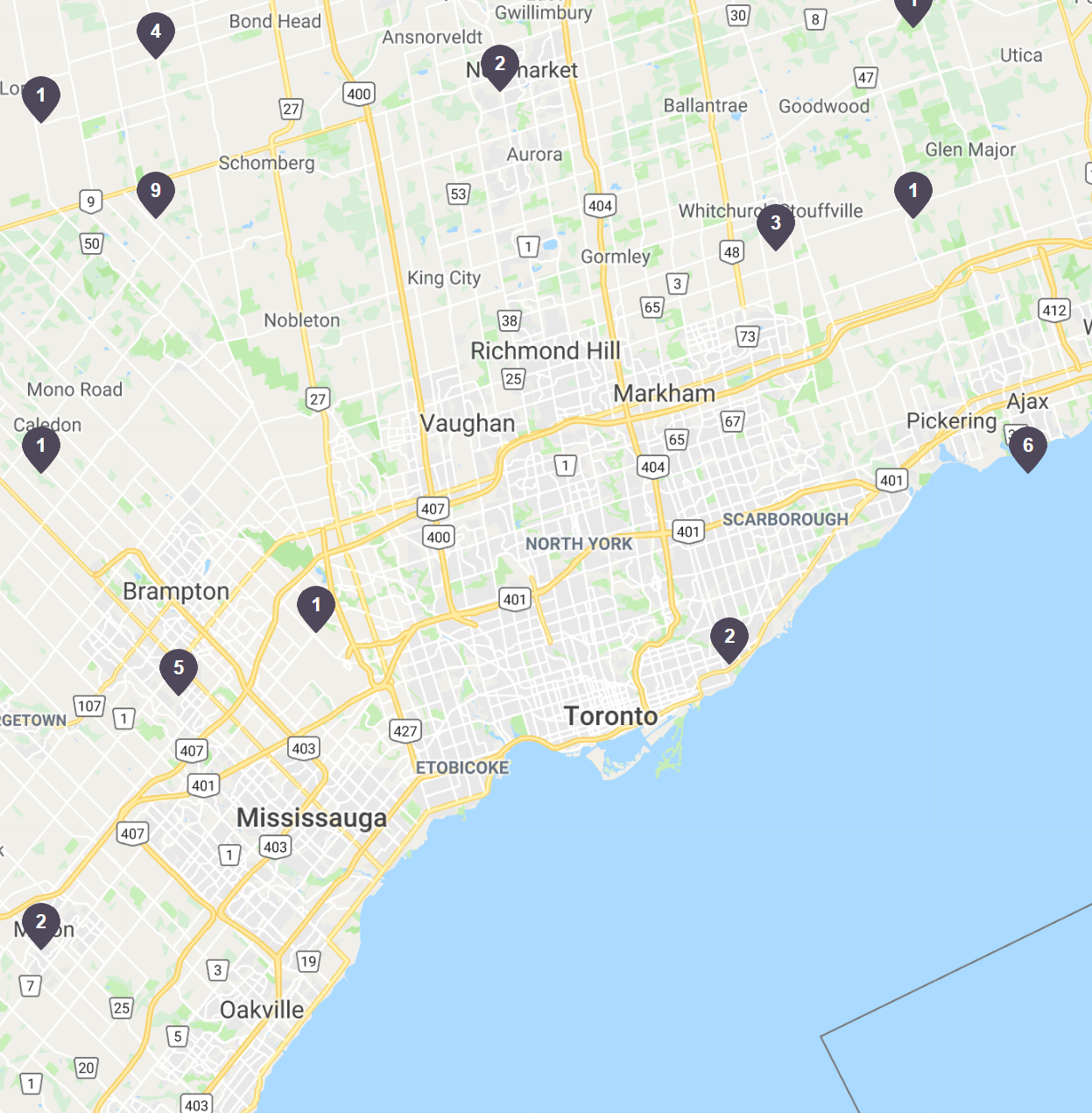Summary: The CMHC Shared Equity Mortgage comes up short, based on the info the government has graced us with thus far. Some of these projections may change, however, as the government releases more information on the programs.
OK, someone please tell us our numbers¹ are wrong, because from where we sit the First-Time Home Buyer Incentive (FTHBI) just announced by the Liberal government looks like little more than budget window dressing.
And, oh my lord, what a botched rollout it was. It is completely mind-boggling that such a high-profile announcement promising to “make homeownership more affordable” omitted so many vital details. There was no guidance on the equity sharing amount, payback period, loan-to-value limits, etc. It’s as if the Finance Minister just thought of this idea last week and had to rush it into the budget.
The mishandling of this announcement has caused all kinds of inaccuracies in reporting. Case in point are the estimates for the maximum possible purchase price under the FTHBI, which range from $480,000 in the Globe and Mail and “around $500,000” (TD Economics), to $533,000 (National Bank Financial) and “under $600,000” (John Pasalis on BNN today).
We’ve been trying to confirm the “official” maximum purchase price directly from the source because it’s crucial to understanding the impact of this proposal. But, so far, the Department of Finance has only repeated to us that the “participants’ insured mortgage and the incentive amount cannot be greater than four times the participants’ annual household incomes.” (They said they’d get back to us, so we’ll share any updates later.)
Reading the announcement literally, a creditworthy couple making $119,999.99 (the income limit under the program), making the minimum 5% down payment and getting a 5% “incentive (loan)” from CMHC can qualify for a $500,000 purchase price.
UPDATE: After this was published CMHC came out with a statement saying the program “applies up to a house price of $505,000.” It calculates that number by making two unexpected assumptions:
A) the insurance premium is “excluded from the first mortgage amount,” and
B) the insurance premium is “excluded from the [four times household income] loan-to-income limit.”
2-bed Houses for Sale Under $500,000. Source: Realtor.ca
If that same couple could manage the minimum down payment (5.5%) and got a regular old insured mortgage, they’d qualify for much more — up to a $560,000 home — without the government taking any piece of their future price appreciation.
TD Economics estimated yesterday that the Liberals’ new first-time buyer initiatives would boost home sales by 2-5% through 2020. That seemed reasonable to us until the limits of this program finally sunk in. Now, we’d be surprised if it moved the needle more than 1% to 2%. B.C. had a roughly similar (but better) program and uptake was so low (78% below B.C.’s forecast) that they cancelled it last March.
So it turns out that the FTHBI (appears to) do little to improve access to mortgages. And perhaps we shouldn’t be surprised given policy-makers’ concerns about debt loads.
What it does do is reduce your payment/interest expense and save you on insurance premiums. But in return you have to cough up a chunk of your future home price gains to big brother. (The amount was not disclosed by officials.)
That said, if you think home prices may fall in your region before you sell, you may as well sign up so the government can absorb some of your losses. Appearing yesterday on BNN, Finance Minister Bill Morneau confimed, “There will be some sharing of upside and downside.”
As for getting more people into new homes, the FTHBI does little to help the “affordability” (housing accessibility) crunch. And let’s not forget how severely strained housing access is in our most expensive cities. For example, we found only one 2-bedroom property under $500,000 within a half-hour commute to downtown Toronto. Within a one-hour commute there were less than a dozen such properties for sale. And 100,000+ people move into the GTA every year!
As for the $10,000 increase in the RRSP Home Buyers’ Plan (HBP) withdrawal limit, only 20,250 people in 2017 used their full $25,000 HBP allowance, according to CRA (thank you to Greg Clump at CREA for this data). Meanwhile, there are about 300,000 first-time buyers each year in Canada, notes Mortgage Professionals Canada economist Will Dunning.
“Early analysis suggests that sales could be pushed up by 2% to 5% through end-2020,” as a result of these programs, writes TD Economics. It sees “prices rising by a similar amount given an unchanged supply path in the near-term.”
We can’t foresee anything close to the 5% number. Not as a direct result of the FTHBI and HBP changes, anyway.
To be fair to the Finance Department, this is an initial assessment and some of our analysis thus far may be lacking—at least until they provide the missing details on their program, which they should have done yesterday.
¹ Based on a sample first-time homebuyers’ (25- to 34-year-old’s) income of $44,200, as per StatsCan.

 log in
log in
 Summary: The CMHC Shared
Summary: The CMHC Shared 
10 Comments
The FTHBI seems like an unusual tactic to address housing affordability. I’m a little confused, if the government has a 10% stake in my house, and I don’t get around to paying that back until 10 years later (and prior to the sale of the house), do I have to pay the government their 10% share of the fair market value of the house, or 10% of the purchase price?
Our guess is that you’ll pay the government its share of your current property value at the time you discharge CMHC’s shared equity mortgage. A new appraisal would presumably be required unless they plan to auto-value properties.
The government just can’t keep its sticky fingers out of most things lucrative, and right now that’s future Canadian house appreciation. It may not amount to much now, but over time, and depending on how many suckers fall for this scam to sell out a portion of their home equity, this could become quite the cash cow for future governments.
Allowing the government to own a portion of my home… that’ll be the day. If you need to resort to a scheme like this, perhaps you’re not quite ready for home ownership just yet.
GTA market is for overseas and dirty money. Government should restrict overseas and charge more tax to speculators. This is the only way to solve affordable crisis!
A lot overseas used fake documents got loans from Canadian major banks by the same interest rate what Canadian can get. Realtors helped them with fake documents to avoid 15% oversea tax! These are all the factors drove properties price going up crazy. Canada becames a crime heaven country for money laundry!
To help the affordability there’s only one solution which is prices have to come down and the percentage of drop would vary from city to city.
Now I know that some will come out and reply that why you would want people to lose equity in their homes and just to save them some time replying my answer has two parts to it. The first one is that in the first place the huge increases in prices were to some extent artificial. And the second one which is as important is that if you bought a house and the price went up 50% – 100% in relatively a short period of time then if it drops back by say 30% – 40% I wouldn’t call that losing equity. That would be a needed correction and where the buyer would still be ahead in equity gain from when they originally bought the property. The only downside would be for buyers who bought at the peak of the bubble and many of those would be speculators or regular buyers but who didn’t do their homework and could lose money but those wouldn’t be the majority and I can’t understand why other people should subsidize those indirectly.
Thanks for the post, Michel.
The market will find it’s own equilibrium and ultimately it will be based on true underlying supply and demand. No one in their right mind would root for prices to overextend above that level (whatever it is, in theory) for any appreciable amount of time, as doing so would create instability and economic hardship.
Eventually, correction or not, prices are going to keep growing faster than new buyers would like (and Canadians are going to keep having this conversation ad nauseam) until enough supply satisfies demand from people who work in higher-cost regions.
Cheers
So most of the best rates listed on the site are for people with less than 20% default insured mortgages. If I have more than 20% down how much of a difference would you generally (ballpark) expect in the rate offered to me?
For example hsbc insured rate on a 5 year fixed:2.89
hsbc uninsured rate on 5yr fixed: ???
Thanks
HerculesMonsterJohnson,
Sounds like you work out a lot.
Further to your question, if we’re talking nationally available 5-year fixed rates, the difference between high-ratio (default insured) rates and low-ratio (for those with 20%+ equity) rates is 0.25%-points.
For refis you’ll pay an additional 0.10%-points.